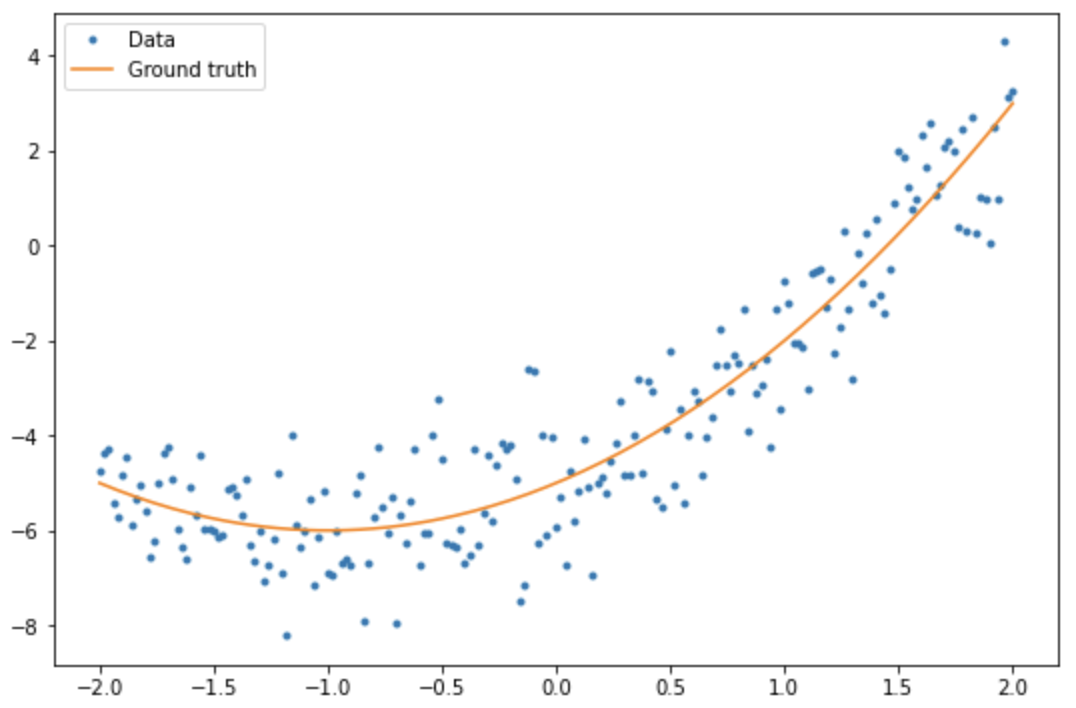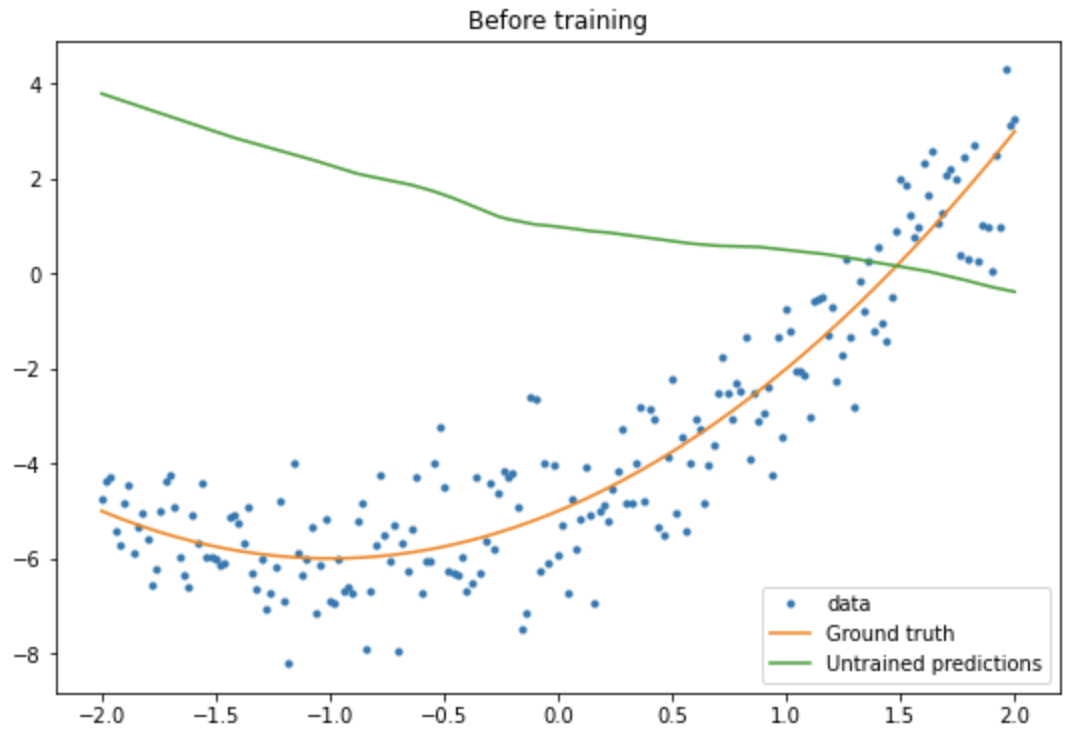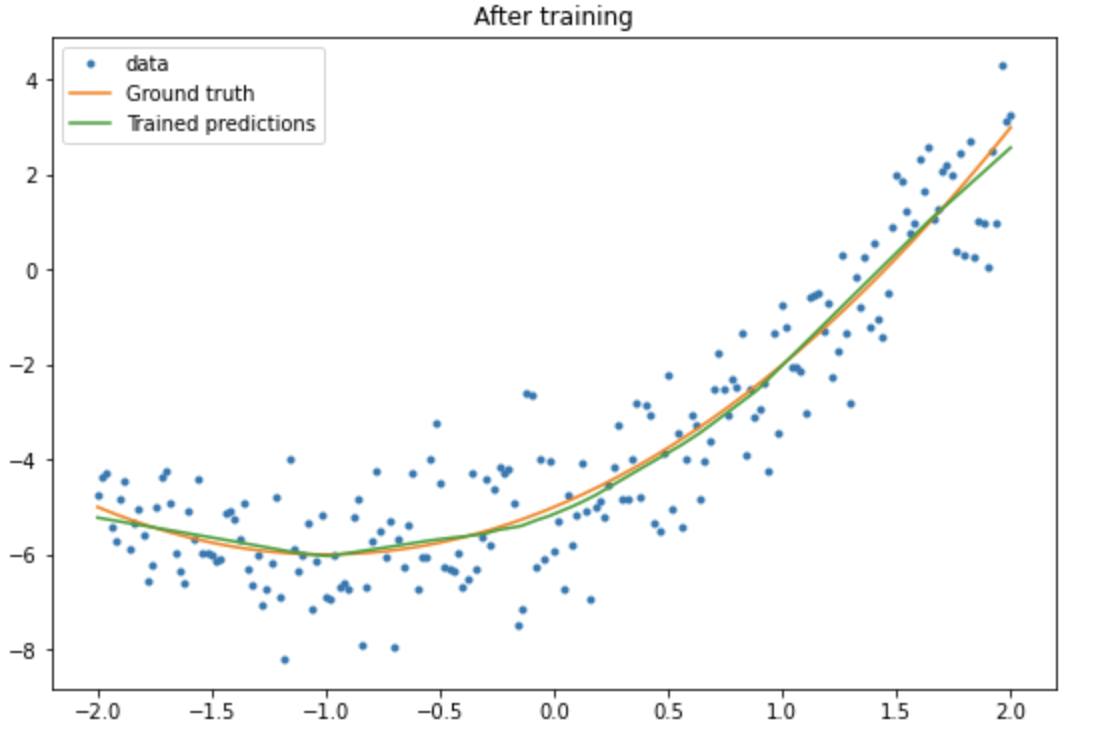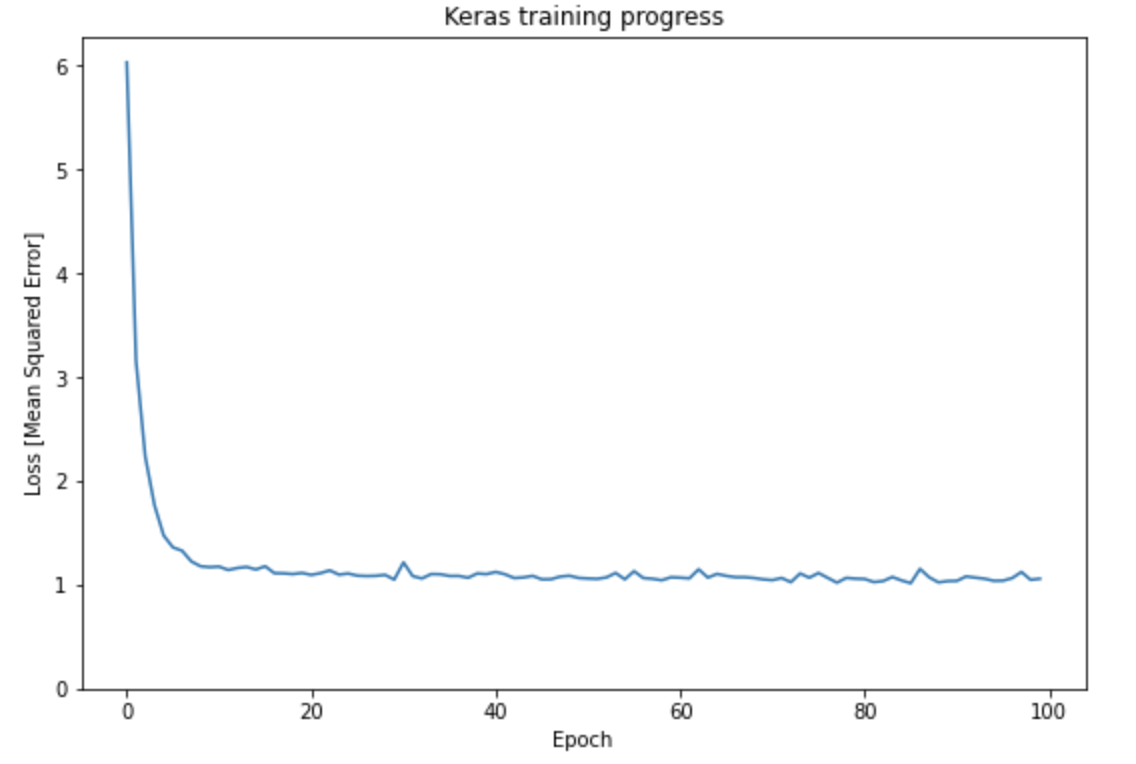Tensorflow(一) TensorFlow基础
开始学习TensorFlow:https://www.tensorflow.org/tutorials
TensorFlow的官网上有Tutorial和Guide两部分教程,Guide主要介绍一些概念性的东西,Tutorial则更加通过实例来介绍TensorFlow的使用。
本篇介绍TensorFlow基础,参考:https://www.tensorflow.org/guide/basics
TensorFlow 基础
TensorFlow是一个端到端的机器学习平台。支持以下功能:
- 基于多维数组的数值计算(类似于NumPy)。
- GPU与分布式处理
- 自动分化
- 模型构建、训练、输出
Tensors
Tensor是TensorFlow中的基本数据存储单元,下为一个二维的tensor:
import tensorflow as tf
x = tf.constant([[1., 2., 3.],
[4., 5., 6.]])
print(x)
print(x.shape)
print(x.dtype)
tf.Tensor(
[[1. 2. 3.]
[4. 5. 6.]], shape=(2, 3), dtype=float32)
(2, 3)
<dtype: 'float32'>
类似Numpy, tf.Tensor 中的shape和dtype属性:
Tensor.shape: tells you the size of the tensor along each of its axes.Tensor.dtype: tells you the type of all the elements in the tensor.
TensorFlow实现了对tensor的标准数学运算,以及许多专门用于机器学习的运算。
如:
x + x
<tf.Tensor: shape=(2, 3), dtype=float32, numpy=
array([[ 2., 4., 6.],
[ 8., 10., 12.]], dtype=float32)>
5 * x
<tf.Tensor: shape=(2, 3), dtype=float32, numpy=
array([[ 5., 10., 15.],
[20., 25., 30.]], dtype=float32)>
x @ tf.transpose(x)
<tf.Tensor: shape=(2, 2), dtype=float32, numpy=
array([[14., 32.],
[32., 77.]], dtype=float32)>
tf.concat([x, x, x], axis=0)
<tf.Tensor: shape=(6, 3), dtype=float32, numpy=
array([[1., 2., 3.],
[4., 5., 6.],
[1., 2., 3.],
[4., 5., 6.],
[1., 2., 3.],
[4., 5., 6.]], dtype=float32)>
tf.nn.softmax(x, axis=-1)
<tf.Tensor: shape=(2, 3), dtype=float32, numpy=
array([[0.09003057, 0.24472848, 0.66524094],
[0.09003057, 0.24472848, 0.66524094]], dtype=float32)>
tf.reduce_sum(x)
<tf.Tensor: shape=(), dtype=float32, numpy=21.0>
在CPU上运行大型计算可能很慢。当正确配置时,TensorFlow可以使用gpu等加速硬件来快速执行操作。
if tf.config.list_physical_devices('GPU'):
print("TensorFlow **IS** using the GPU")
else:
print("TensorFlow **IS NOT** using the GPU")
TensorFlow IS NOT using the GPU
Variables
通常 tf.Tensor 是不可变的, 在TensorFlow中存储如权重这样的变量用tf.Variable.
var = tf.Variable([0.0, 0.0, 0.0])
var.assign([1, 2, 3])
<tf.Variable 'UnreadVariable' shape=(3,) dtype=float32, numpy=array([1., 2., 3.], dtype=float32)>
var.assign_add([1, 1, 1])
<tf.Variable 'UnreadVariable' shape=(3,) dtype=float32, numpy=array([2., 3., 4.], dtype=float32)>
Gradient Descent
Gradient descent 自动分化是机器学习算法的基础
为了实现这一点,TensorFlow实现了自动微分(autodiff),它使用微积分来计算梯度。通常,您将使用它来计算模型的_error_或_loss相对于其权重的梯度。
x = tf.Variable(1.0)
def f(x):
y = x**2 + 2*x - 5
return y
f(x)
<tf.Tensor: shape=(), dtype=float32, numpy=-2.0>
在x = 1.0处,y = f(x) = (1**2 + 2*1 - 5) = -2
y的导数是y = f'(x) = (2*x + 2) = 4 TensorFlow可以自动计算:
with tf.GradientTape() as tape:
y = f(x)
g_x = tape.gradient(y, x) # g(x) = dy/dx
g_x
<tf.Tensor: shape=(), dtype=float32, numpy=4.0>
这个简化的例子只对单个标量(' x ')求导,但TensorFlow可以同时计算对任意数量的非标量Tensor的梯度。
Graphs & tf.function
TensorFlow提供了以下功能:
- Performance optimization: 加速训练和推理.
- Export: 导出训练好的模型.
这需要 tf.function 相关功能支持
@tf.function
def my_func(x):
print('Tracing.\n')
return tf.reduce_sum(x)
参考: https://www.tensorflow.org/guide/function
通过tf.functionDecorator,对函数进行Tensor加速的操作
x = tf.constant([1, 2, 3])
my_func(x)
Tracing.
<tf.Tensor: shape=(), dtype=int32, numpy=6>
在随后的调用中,TensorFlow只执行优化后的图,跳过任何非TensorFlow步骤。注意'my_func 不会打印_tracing_,因为print 是一个Python函数,而不是TensorFlow函数。
x = tf.constant([10, 9, 8])
my_func(x)
<tf.Tensor: shape=(), dtype=int32, numpy=27>
一个graph不会随着不同_signature_ (shape and dtype)的输入而重用,定义一个新的graph:
x = tf.constant([10.0, 9.1, 8.2], dtype=tf.float32)
my_func(x)
Tracing.
<tf.Tensor: shape=(), dtype=float32, numpy=27.3>
这些Graph提供了两个好处:
- 在许多情况下,它们提供了显著的执行速度。
- 您可以使用tf导出这些图形。saved_model,在服务器或移动设备等其他系统上运行,不需要安装Python。
Modules, layers, models
tf.Module 是一个用来管理 tf.Variable 对象的类,tf.function提供方法用来操作它们。
tf.Module 包含了2个显著的特征:
- 你可以使用
tf.train.Checkpoint来保存和恢复变量的值。这在训练期间很有用,因为它可以快速保存和恢复模型的状态。 - 您可以导入和导出
tf.variable变量的值,tf.function使用tf.saved_model的函数图。这允许您独立于创建模型的Python程序运行模型。
tf.Module完整示例:
class MyModule(tf.Module):
def __init__(self, value):
self.weight = tf.Variable(value)
@tf.function
def multiply(self, x):
return x * self.weight
mod = MyModule(3)
mod.multiply(tf.constant([1, 2, 3]))
<tf.Tensor: shape=(3,), dtype=int32, numpy=array([3, 6, 9], dtype=int32)>
存储 Module:
save_path = './saved'
tf.saved_model.save(mod, save_path)
INFO:tensorflow:Assets written to: ./saved/assets
2022-01-19 02:29:48.135588: W tensorflow/python/util/util.cc:368] Sets are not currently considered sequences, but this may change in the future, so consider avoiding using them.
SavedModel的存出结果与代码相互独立,你可以通过Python载入它,或者是其它语言。也可以用于TensorFlow Serving,或者用于TensorFlow Lite 或TensorFlow JS.
reloaded = tf.saved_model.load(save_path)
reloaded.multiply(tf.constant([1, 2, 3]))
<tf.Tensor: shape=(3,), dtype=int32, numpy=array([3, 6, 9], dtype=int32)>
tf.keras.layers.Layer 和 tf.keras.Model 基于Module构建,为构建、训练和保存模型提供额外的功能和方便的方法。
Training loops
现在把这些都放在一起,建立一个基本的模型,从头开始训练它。
首先,创建一些示例数据。这就产生了一个松散地遵循二次曲线的点云:
import matplotlib
from matplotlib import pyplot as plt
matplotlib.rcParams['figure.figsize'] = [9, 6]
x = tf.linspace(-2, 2, 201)
x = tf.cast(x, tf.float32)
def f(x):
y = x**2 + 2*x - 5
return y
y = f(x) + tf.random.normal(shape=[201])
plt.plot(x.numpy(), y.numpy(), '.', label='Data')
plt.plot(x, f(x), label='Ground truth')
plt.legend();

创建模型:
class Model(tf.keras.Model):
def __init__(self, units):
super().__init__()
self.dense1 = tf.keras.layers.Dense(units=units,
activation=tf.nn.relu,
kernel_initializer=tf.random.normal,
bias_initializer=tf.random.normal)
self.dense2 = tf.keras.layers.Dense(1)
def call(self, x, training=True):
# For Keras layers/models, implement `call` instead of `__call__`.
x = x[:, tf.newaxis]
x = self.dense1(x)
x = self.dense2(x)
return tf.squeeze(x, axis=1)
这里:
tf.keras.layers.Dense构建一个神经层,units传入的参数是输出的维度,kernel_initializer和bias_initializer这里用tf.random.normal各生成一组随机正态分布的向量tf.squeeze的作用是移除一维向量
model = Model(64)
plt.plot(x.numpy(), y.numpy(), '.', label='data')
plt.plot(x, f(x), label='Ground truth')
plt.plot(x, model(x), label='Untrained predictions')
plt.title('Before training')
plt.legend();

写一个基本的training loop:
variables = model.variables
optimizer = tf.optimizers.SGD(learning_rate=0.01)
for step in range(1000):
with tf.GradientTape() as tape:
prediction = model(x)
error = (y-prediction)**2
mean_error = tf.reduce_mean(error)
gradient = tape.gradient(mean_error, variables)
optimizer.apply_gradients(zip(gradient, variables))
if step % 100 == 0:
print(f'Mean squared error: {mean_error.numpy():0.3f}')
Mean squared error: 39.156
Mean squared error: 1.100
Mean squared error: 1.070
Mean squared error: 1.052
Mean squared error: 1.039
Mean squared error: 1.030
Mean squared error: 1.023
Mean squared error: 1.017
Mean squared error: 1.012
Mean squared error: 1.008
plt.plot(x.numpy(),y.numpy(), '.', label="data")
plt.plot(x, f(x), label='Ground truth')
plt.plot(x, model(x), label='Trained predictions')
plt.title('After training')
plt.legend();

以上便是用一个拟合的过程,这里的训练过程还是以Keras为主。
可以用Model.compile 和Model.fit实现自己的training loop。
new_model = Model(64)
new_model.compile(
loss=tf.keras.losses.MSE,
optimizer=tf.optimizers.SGD(learning_rate=0.01))
history = new_model.fit(x, y,
epochs=100,
batch_size=32,
verbose=0)
model.save('./my_model')
INFO:tensorflow:Assets written to: ./my_model/assets
plt.plot(history.history['loss'])
plt.xlabel('Epoch')
plt.ylim([0, max(plt.ylim())])
plt.ylabel('Loss [Mean Squared Error]')
plt.title('Keras training progress');



 浙公网安备 33010602011771号
浙公网安备 33010602011771号